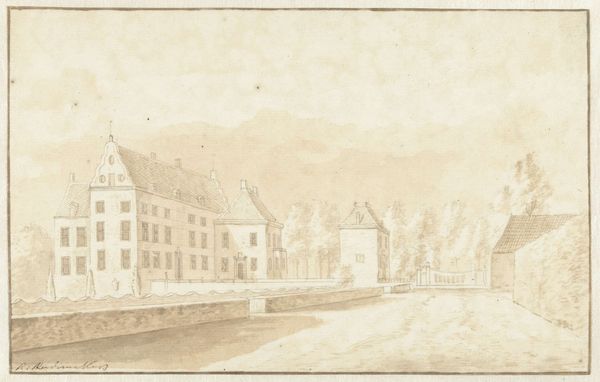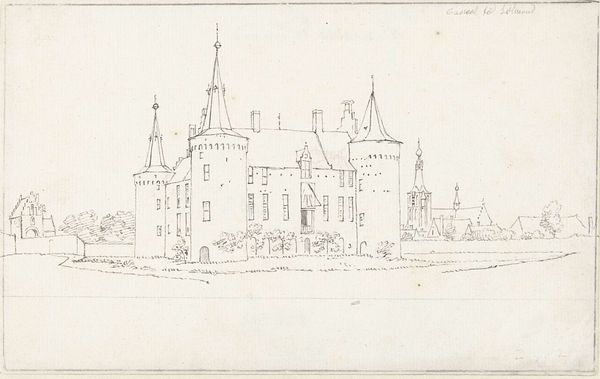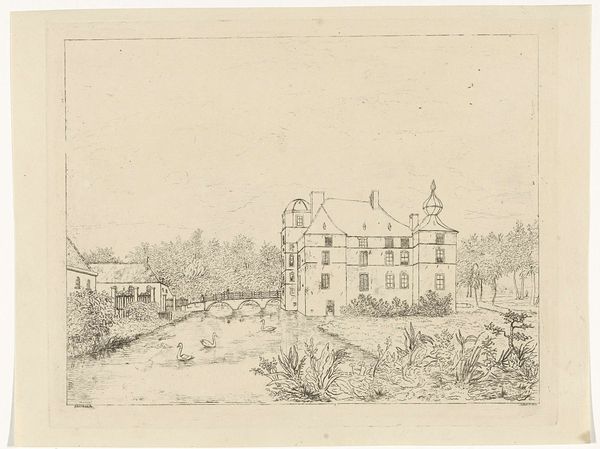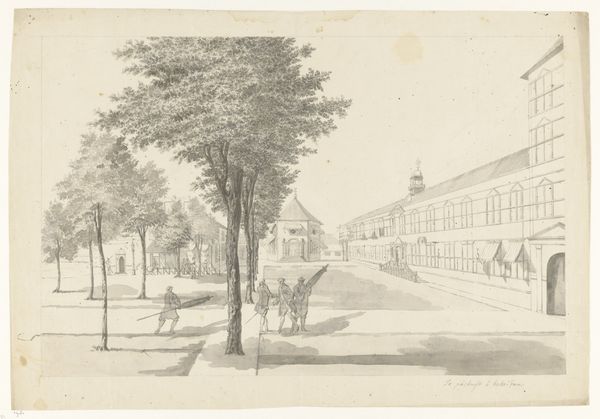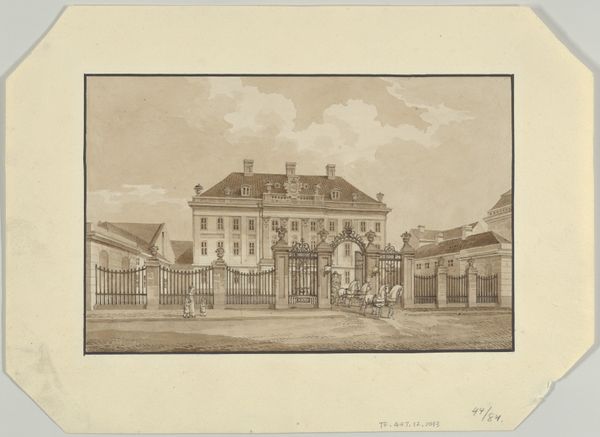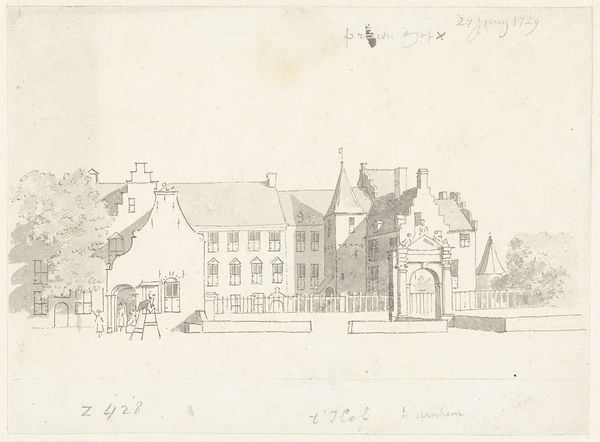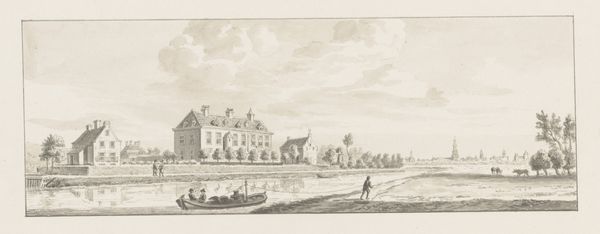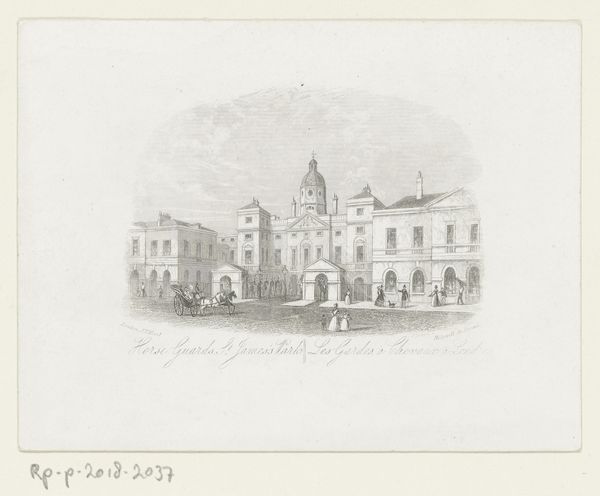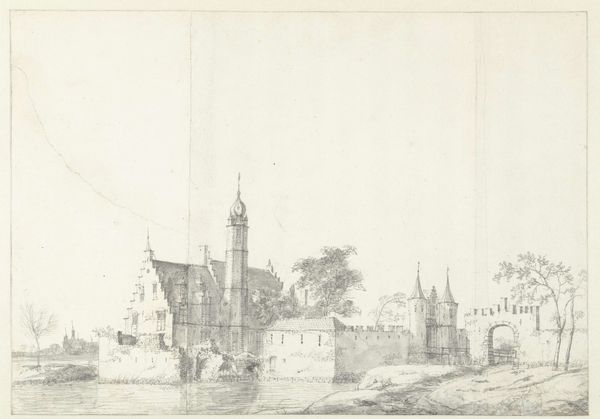
drawing, paper, ink
#
drawing
#
neoclacissism
#
landscape
#
etching
#
paper
#
ink
#
romanticism
#
cityscape
Dimensions: 186 mm (height) x 261 mm (width) (bladmaal)
Martinus Rørbye sketched ‘Herregården Voergaard’ in 1830 using pencil and sepia on paper. Rørbye was a central figure in the Danish Golden Age, a period defined by national self-discovery. During the Golden Age, Danish artists explored themes of national identity, often focusing on landscape. Here, Rørbye captures Voergaard Manor with remarkable precision. But the manor itself—with its history enmeshed with stories of wealth, power, and aristocratic excess—reflects the deep divides within Danish society. Rørbye, though celebrated, was always somewhat of an outsider, keenly aware of social stratifications. His choice of sepia lends the drawing a sense of nostalgia, inviting us to reflect on the layers of history embedded in the landscape. He invites us to contemplate the relationship between the land, its inhabitants, and the stories we tell about our collective past.
Comments
No comments
Be the first to comment and join the conversation on the ultimate creative platform.

